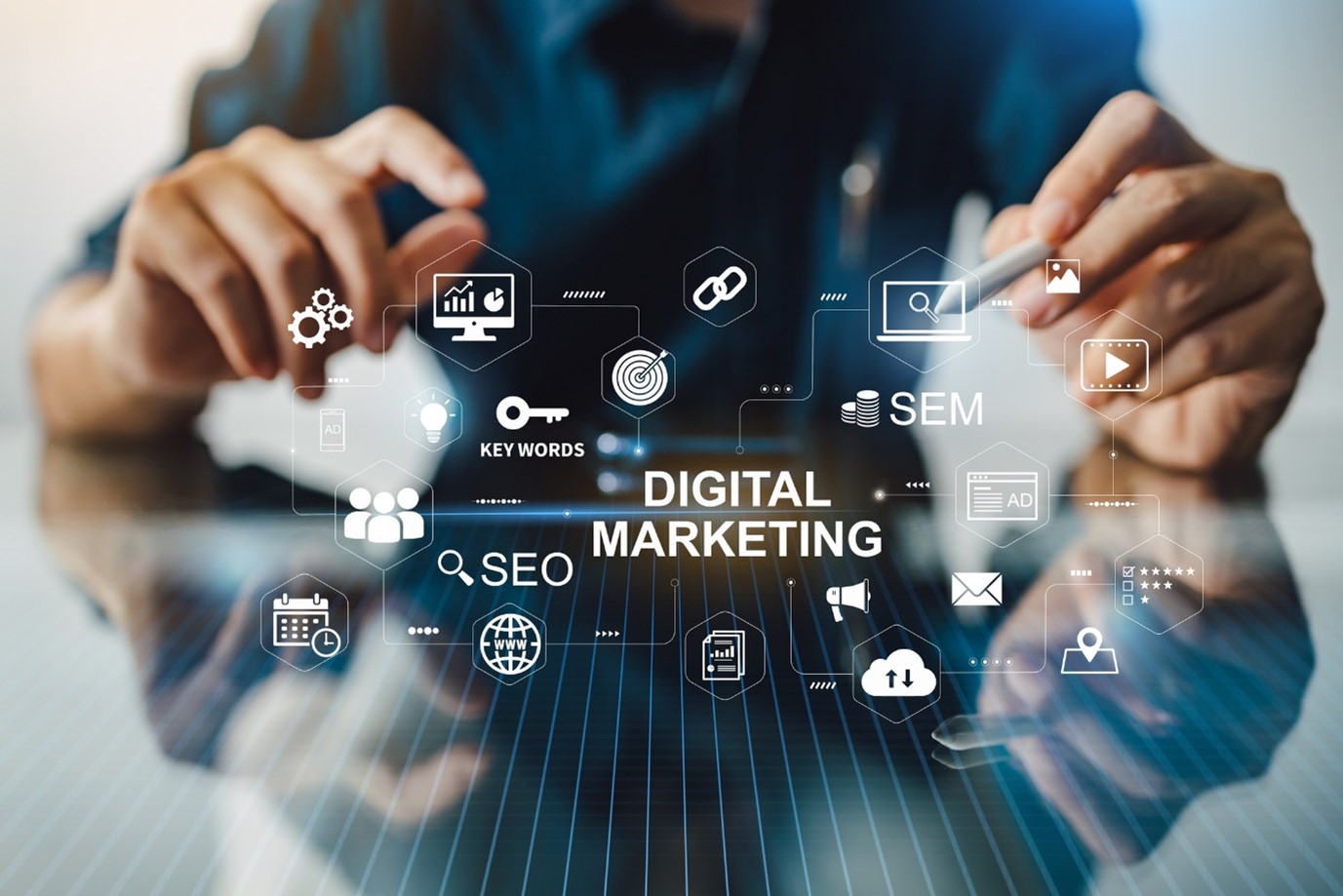The Ultimate Glossary of Digital Marketing Terms

Ultimate Digital Marketing Glossary
As the marketing landscape evolves, staying on top of the latest terminology is essential for any business looking to deliver personalized, data-driven customer experiences. Our Ultimate Glossary of Digital Marketing Terms provides clear, concise definitions of the most important concepts in the industry—ranging from campaign orchestration to AI-driven marketing.
Whether you’re a seasoned marketer or new to the world of omnichannel engagement, this glossary is designed to help you better understand the terms and strategies that shape today’s marketing landscape. By familiarizing yourself with these key concepts, you can make more informed decisions and unlock the full potential of your marketing efforts with the Experiture Customer Engagement Platform.
| Marketing Term | Definition |
| A/B Testing | Comparing two versions of a marketing element to see which performs better in driving conversions. |
| AI-Driven Marketing | Using AI technologies to automate and optimize marketing tasks like personalization and segmentation. |
| Account-Based Marketing (ABM) | Account-Based Marketing (ABM) is a focused marketing strategy where marketers target key accounts rather than a broad audience. ABM aligns marketing and sales teams to engage high-value clients through personalized campaigns. For example, a software company may use ABM to create tailored content for a select list of potential enterprise clients, aiming to increase conversions. |
| Attribution | Determining which marketing channels or campaigns drive specific outcomes such as conversions. |
| Behavioral Targeting | Using data about user behavior to deliver personalized content or ads. |
| Campaign Orchestration | Managing and automating multichannel marketing campaigns with consistent messaging. |
| Churn Rate | The percentage of customers who stop using a service or buying products over a certain period. |
| Click-Through Rate (CTR) | The percentage of users who click on a specific link after viewing an ad or email. |
| Content Management System (CMS) | A software platform that helps manage and create digital content for websites. |
| Contextual Advertising | Advertising that targets users based on the context of the content they are viewing. |
| Conversion Rate | The percentage of visitors who take a desired action, such as making a purchase. |
| Cross-Channel Marketing | An integrated marketing strategy using print plus one or more other digital channels cohesively to deliver a unified experience. |
| Customer Data Platform (CDP) | A centralized platform that integrates data from multiple sources to create unified customer profiles. |
| Customer Engagement | Engaging customers across various touchpoints to build relationships and loyalty. |
| Customer Journey | The customer journey refers to the complete experience a customer goes through when interacting with a brand, from initial awareness to post-purchase. It includes touchpoints across multiple channels. For example, a customer may start by researching a product online, then make a purchase and receive follow-up emails. |
| Customer Lifetime Value (CLV) | A prediction of the total revenue a customer will generate throughout their relationship with the company. |
| Data-Driven Marketing | Strategies and decisions based on insights from analyzing large amounts of customer data. |
| Demand Generation | Marketing activities aimed at driving awareness and interest in a product or service. |
| Direct Mail | A physical form of marketing through printed materials sent to customers’ physical addresses. |
| Direct Marketing | A type of marketing that involves communicating directly with consumers to generate a response or transaction. It bypasses intermediaries such as traditional media channels (e.g., TV, radio, or newspapers) and instead focuses on direct communication methods, like mail, email, or SMS to deliver personalized messages. |
| Direct Response Marketing | Direct Response Marketing is a subset of direct marketing focused specifically on eliciting an immediate response from the recipient. This marketing strategy is designed to trigger a specific action, such as making a purchase, signing up for a newsletter, or requesting more information, through clear and compelling calls to action. |
| Dynamic Content | Content that adapts automatically based on user data for personalized experiences. |
| Email Personalization | Customizing emails based on user data like name, behavior, or purchase history. |
| Engagement Rate | A metric measuring how much users engage with content, usually through likes, shares, or comments. |
| First-Party Data | Data collected directly from customers through owned channels like websites or apps. |
| Geo-Targeting | Delivering content or ads based on a user’s geographic location. |
| Heatmap | A visual representation showing where users interact most with a webpage or app. |
| Identity Resolution | Connecting different customer data points to create unified profiles for personalized marketing. |
| Journey Orchestration | Managing customer interactions across touchpoints to provide a personalized experience. |
| Key Performance Indicator (KPI) | A measurable value used to evaluate the success of marketing campaigns, such as conversion rates. |
| Landing Page | A standalone web page designed for specific campaigns with a focused call to action. |
| Lead Nurturing | Developing relationships with potential customers through automated sequences or content marketing. |
| Lifecycle Marketing | Addressing the entire customer journey to foster long-term loyalty. |
| Lookalike Audience | Using existing customer data to find new potential customers with similar characteristics. |
| Marketing Automation | Software that automates repetitive marketing tasks for more efficient execution. |
| Multichannel Marketing | Interacting with customers through multiple digital communication channels like email and SMS. |
| Omnichannel Marketing | Delivering consistent customer experiences across online (digital) and offline (print) marketing channels. |
| Pay-Per-Click (PPC) | An advertising model where advertisers pay each time a user clicks on their ad. |
| Personalized URLs (PURLs) | Unique URLs created for individual recipients to track responses and personalize experiences. |
| Predictive Analytics | Using historical data and AI algorithms to predict future customer behaviors. |
| Predictive Segmentation | Predictive segmentation uses machine learning and data analysis to group customers based on predicted future behaviors, such as likelihood to purchase or churn. This approach helps marketers target segments with personalized strategies. For example, a retail company uses predictive segmentation to identify customers likely to purchase soon and targets them with special offers. |
| Real-Time Personalization | Delivering personalized content and offers instantly based on user behavior or location. |
| Retargeting | Serving ads to users who have previously interacted with a brand but haven’t converted. |
| Return on Advertising Spend (ROAS) | ROAS measures the revenue generated for every dollar spent on advertising. It is calculated by dividing the revenue from ads by the total ad spend. ROAS helps marketers evaluate the effectiveness of their advertising campaigns and optimize future ad spending. For example, if a company spends $1,000 on ads and generates $5,000 in revenue, the ROAS is 5:1. |
| Return on Investment (ROI) | A measure of profitability, comparing revenue generated to the cost of a marketing campaign. |
| Search Engine Optimization (SEO) | Optimizing web content to rank higher in search engine results pages. |
| Segmentation | Dividing a customer base into distinct groups based on shared characteristics for targeted marketing. |
| Short Message Service (SMS) Marketing | Marketing through text messages sent to users’ mobile phones. |
| Third-Party Data | Data collected by third-party entities without a direct relationship with the customer. |
| Touchpoint | Any interaction a customer has with a brand, such as visiting a website or opening an email. |
| User-Generated Content (UGC) | Content created by users that promotes a brand, often used in social media marketing. |
| Variable Data Printing (VDP) | A printing process allowing customization of each printed piece based on customer data. |
| Web Personalization | Tailoring a website’s content based on a visitor’s preferences or behavior. |
Want to see more? Request a demo Today and see how the Experiture platform can supercharge your customer engagement

